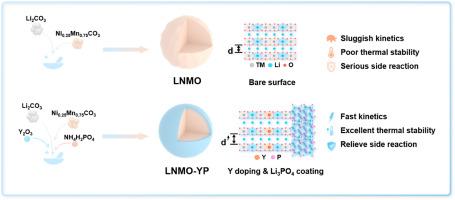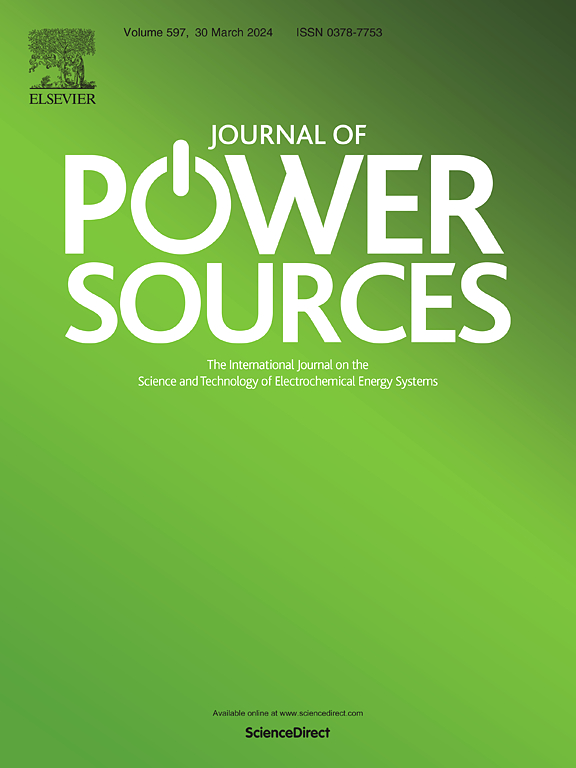Enabling stable cobalt-free Li-rich cathodes through a one-step dual-modified strategy
IF 8.1
2区 工程技术
Q1 CHEMISTRY, PHYSICAL
引用次数: 0
Abstract
Cobalt-free Lithium-rich layered oxides (LRLOs) are promising cathodes for low-cost and high-energy-density Li-ion batteries. However, their remarkable capacity comes with challenges including structural degradation, irreversible oxygen release and sluggish kinetics. Herein, we conduct a one-step dual-modified strategy by yttrium doping and Li3PO4 surface modification. Combining density-functional theory calculations with in-situ X-ray diffraction and in-situ differential electrochemical mass spectrometry, the Y3+ doping and Li3PO4 nano coating modified LRLOs is demonstrated has an excellent structural stability with enhanced Li⁺ diffusion kinetics and stabilized oxygen lattice. Excellent rate performance and thermal stability are achieved: high discharge specific capacity of 221 mAh·g−1 at room temperature (96.5 % at 1 C after 100 cycles) and incredible discharge specific capacity of 210 mAh·g−1 at 55 °C (91.8 % at 2 C after 100 cycles). This work resolves the safety and stability issues and provides a feasible strategy for Co-free LRLOs.

通过一步法双重改性策略实现稳定的无钴富锂阴极
无钴富锂层状氧化物(LRLOs)是低成本、高能量密度锂离子电池的理想阴极。然而,其卓越的容量也带来了挑战,包括结构降解、不可逆的氧气释放和缓慢的动力学。在此,我们通过钇掺杂和 Li3PO4 表面改性,一步完成了双重改性策略。结合密度泛函理论计算、原位 X 射线衍射和原位差分电化学质谱分析,掺杂 Y3+ 和 Li3PO4 纳米涂层改性后的 LRLOs 具有优异的结构稳定性,Li⁺ 扩散动力学得到增强,氧晶格得到稳定。该材料具有优异的速率性能和热稳定性:室温下的放电比容量高达 221 mAh-g-1(100 次循环后,1℃ 时的比容量为 96.5%),55℃ 时的放电比容量为 210 mAh-g-1(100 次循环后,2℃ 时的比容量为 91.8%)。这项工作解决了安全性和稳定性问题,并为无钴低放电环提供了一种可行的策略。
本文章由计算机程序翻译,如有差异,请以英文原文为准。
求助全文
约1分钟内获得全文
求助全文
来源期刊

Journal of Power Sources
工程技术-电化学
CiteScore
16.40
自引率
6.50%
发文量
1249
审稿时长
36 days
期刊介绍:
The Journal of Power Sources is a publication catering to researchers and technologists interested in various aspects of the science, technology, and applications of electrochemical power sources. It covers original research and reviews on primary and secondary batteries, fuel cells, supercapacitors, and photo-electrochemical cells.
Topics considered include the research, development and applications of nanomaterials and novel componentry for these devices. Examples of applications of these electrochemical power sources include:
• Portable electronics
• Electric and Hybrid Electric Vehicles
• Uninterruptible Power Supply (UPS) systems
• Storage of renewable energy
• Satellites and deep space probes
• Boats and ships, drones and aircrafts
• Wearable energy storage systems
 求助内容:
求助内容: 应助结果提醒方式:
应助结果提醒方式:


